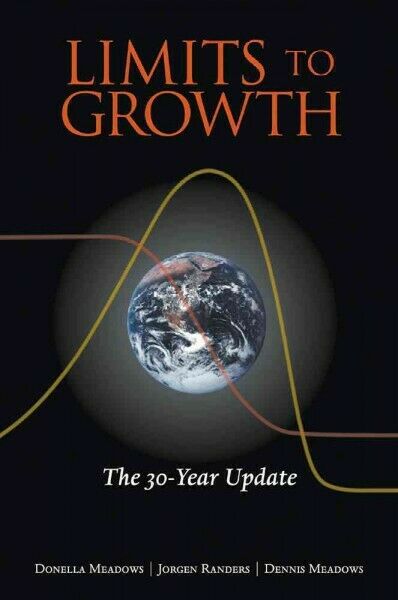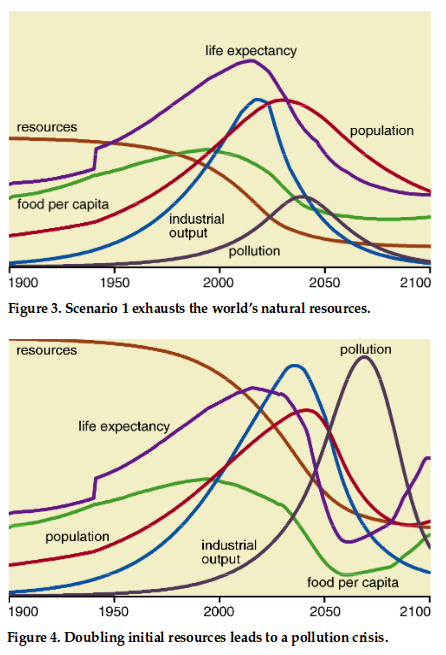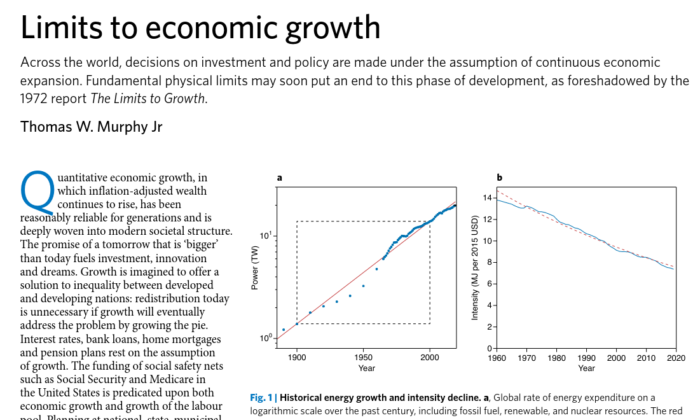The book Limits to Growth doesn’t answer everything about the environment and sustainability, but I find it gives the best high-level, systemic understanding of the patterns of humanity’s overall interaction with nature. The authors created a model and ran simulations. It could have happened that none corresponded with observation, but after 50 years, there is remarkable correspondence, as researched by podcast guest Gaya Herrington. I recommend reading her results after[…] Keep reading →
553: Gaya Herrington, part 1: How far have we passed our limits to growth? What does that mean?
on January 20, 2022 in PodcastFive months ago, Gaya’s work led to headlines like Yep, it’s bleak, says expert who tested 1970s end-of-the-world prediction. The 1970s predictions weren’t exactly predictions, but the headline refers to the book Limits to Growth. If you’re not familiar with it, we start by talking about it. We both consider its views and analysis among the most important. The book simulated possible outcomes for humans on Earth. Those outcomes varied[…] Keep reading →
553: Gaya Herrington, part 1: How far have we passed our limits to growth? What does that mean?
on January 20, 2022 in PodcastFive months ago, Gaya’s work led to headlines like Yep, it’s bleak, says expert who tested 1970s end-of-the-world prediction. The 1970s predictions weren’t exactly predictions, but the headline refers to the book Limits to Growth. If you’re not familiar with it, we start by talking about it. We both consider its views and analysis among the most important. The book simulated possible outcomes for humans on Earth. Those outcomes varied[…] Keep reading →
More Limits to Growth resources and understanding
on January 25, 2018 in Models, NatureI’ve mentioned many times how I considered the approach to the environment, economy, population, etc by the book Limits to Growth the most comprehensive and valuable, though I hadn’t read much critical of it that didn’t seem politically motivated or starting from disagreement. I’ve wanted to find alternative perspectives. I found more resources and perspective, especially in two papers in American Scientist written by Brian Hayes. Both articles followed publishing[…] Keep reading →
Updates on Limits to Growth, finally!
on December 26, 2017 in Leadership, Models, Nature, VisualizationOne of my top resources on the environment is the book Limits to Growth. Reading it was revelatory. They approached the environment the way I thought made sense, then created a model, researched the numbers, plugged them in, and got answers. What made sense was what they call a systemic approach—not to look at one of all the interacting parts, but to look at the whole system, including how the[…] Keep reading →
Limits to economic growth: A peer-reviewed paper by podcast guest Tom Murphy
on August 6, 2022 in BlogI’ve described Tom Murphy’s textbook, Energy and Human Ambitions on a Finite Planet, the science book of the decade. He just published in the peer-reviewed journal Nature Physics, one of the most important parts: how basic physical constraints limit how much our economy can grow. The paper is called Limits to economic growth. Quoting Tom’s blog post linking to the piece inline and in pdf, the “real” article [is] in[…] Keep reading →
Leadership-based thoughts on economic and energy growth and limits
on April 26, 2012 in Awareness, Blog, Leadership, NatureMy closing paragraphs on yesterday’s post, anticipating people’s reaction, got me thinking about Marshall Goldsmith, one of today’s top business thinkers (and a friend). I wrote the following: By now, many of you are probably thinking “we’ve solved all the problems so far, we’ll solve the ones to come” “since before Malthus scientists project doomsday and they never happen, we can ignore this” or “this won’t affect me” If so,[…] Keep reading →




